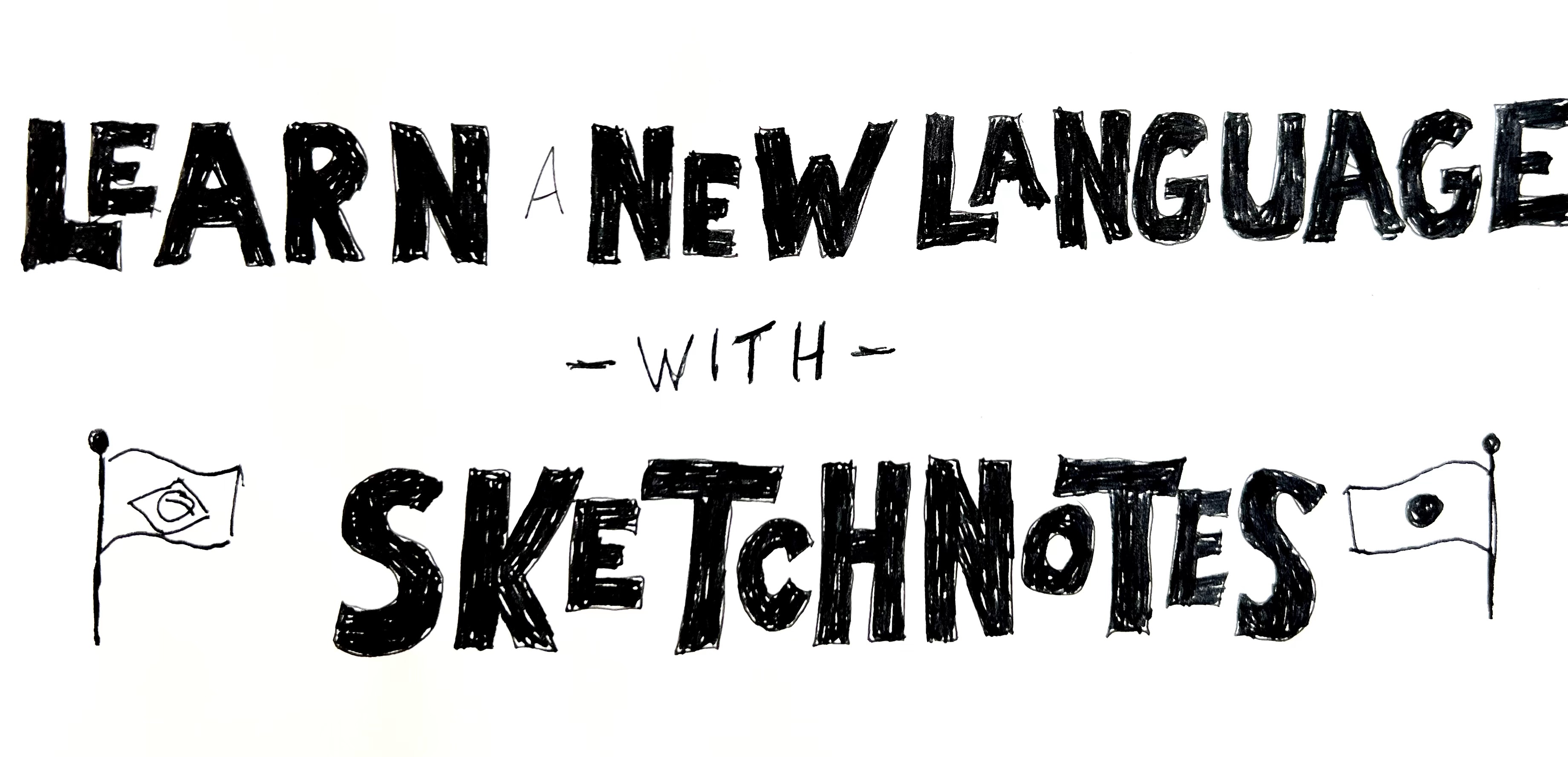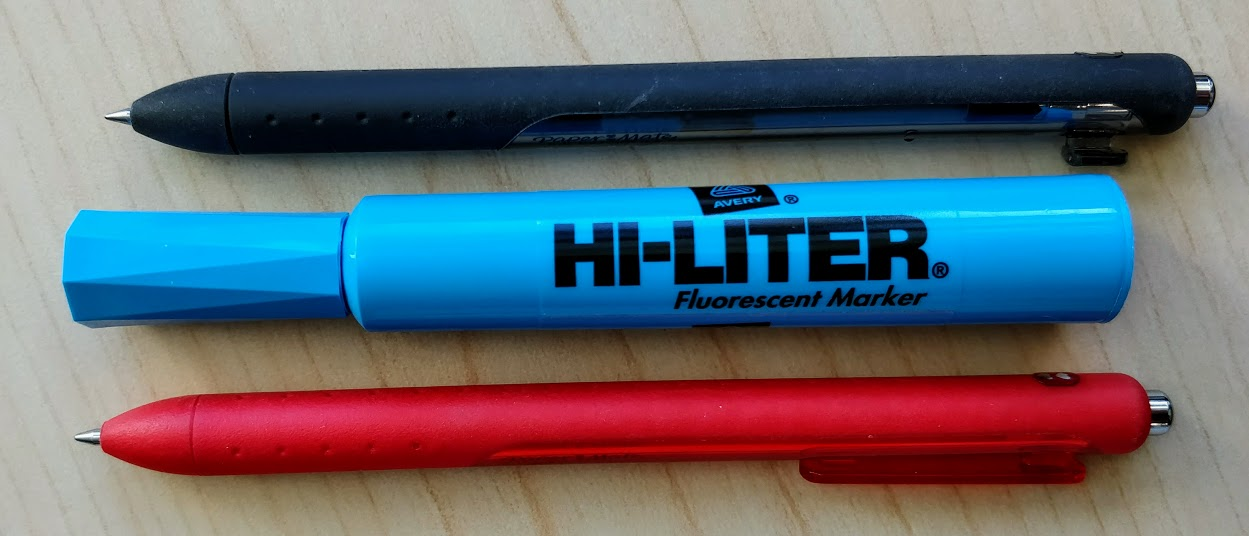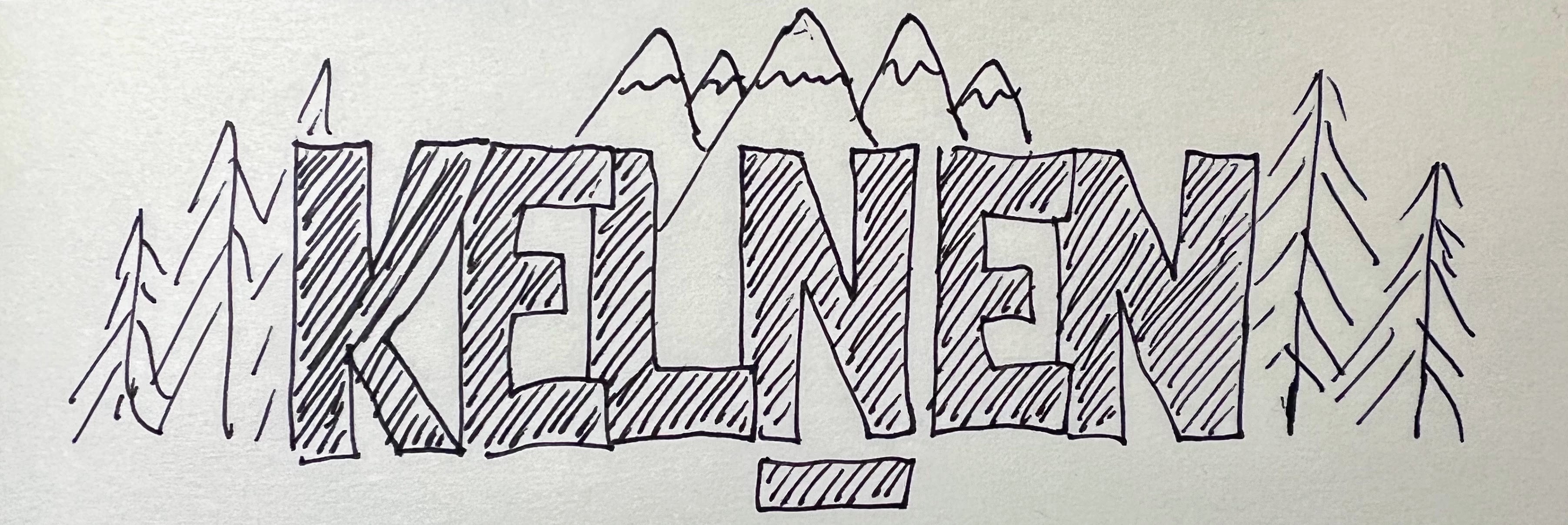
Learn a New Language with Sketchnotes
In this exercise, you learn how to use sketchnote “scenes” to help learn new vocabulary in a language you want to learn or are actively learning. If you have any questions or get stuck as you work through this, please ask your instructor for assistance. Have fun!

- Gather your tools: Notebook (or several sheets of blank paper), a pen (two of different colours if possible), and one or two highlighters.
- If you haven’t already, please watch this short 4-minute video below that will introduce you to the principles underlying sketchnoting for language acquisition in general, and vocabulary building specifically:
- Please ask yourself these questions:
- What kind of vocabulary would you like to learn?
- What language are you learning?
- Of course you can follow along with this tutoral and use the camping vocabulary in the SENĆOŦEN language, but please feel free to use a differnt language and/or vocabulary as you work through this activity.
- Draw a title or topic for your Sketchnote:
- In this case our topic is camping or KELṈEN, so I will draw a title for my sketchnote with KELṈEN large and promenant, and then add some camping or wilderness doodles to the title bar.
- Note that I did not include the English word for camping in the title bar as hopefully the rest of the sketchnote will make the topic more obvious.

- List vocabulary in English and the language you are learning (Here’s a link to a SENĆOŦEN dictionary in case it’s helpful). For the camping example some words to consider might be:
- Tent -> KELEJTEN
- Backpack -> ŦEṈÁ¸TEN
- Fire -> SĆEḰEU¸SE¸
- Smoke -> SBOṮEṈ
- Flashlight -> JEBITEṈ ĆI¸EḰEN¸
- Draw scene with 1 icon for each word, and try to portray a story with the placement of your icons. If you can’t think of how do draw an icon for an object, do a Google image search for “icon tent” for example.
- For example someone arriving at their tent with a backpack and a flashlight.
- Then they light a fire that gives off smoke.
- Create a dialog box for each icon with room for the word in the language you are learning, along with a phonetic spelling so that you can more easily learn the correct pronunciation for each word.

- Once you’re finished your sketchnote (and it shouldn’t be perfect), take a picture of your sketchnote and please share it with us: dscommons@uvic.ca Please let us know if you’d like us to keep your sketchnote private, or if we could use it as an example for other learners (with or without attribution depending on what you’d like).